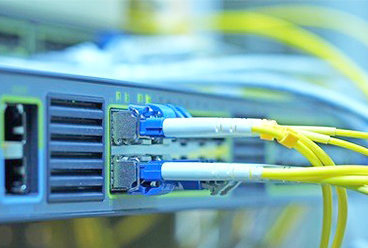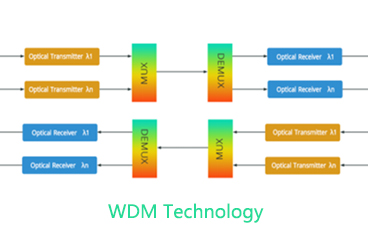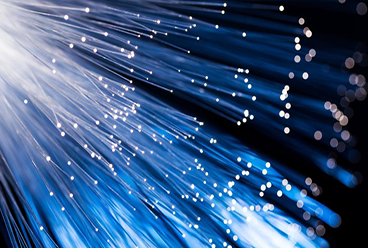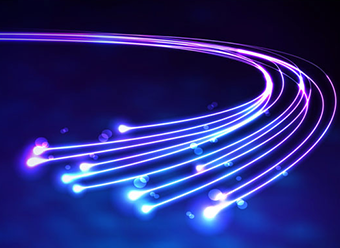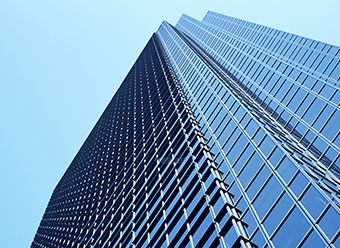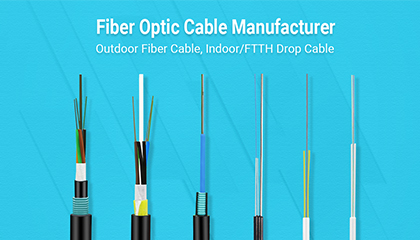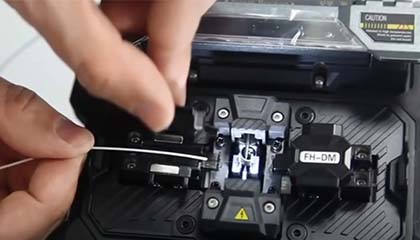Aerial Fiber Optic Cables are very commonly used in fiber optical communication. So what are Aerial Fiber Optic Cable? Aerial Fiber Optic Cable is an insulated Optical Fiber Cable that can be hung between utility poles or power towers. Aerial Fiber Optic Cables are typically made of heavy-duty cable jacket and rugged metal or Aramid Yarn strength members. It has excellent mechanical and environmental properties, high tensile strength, light weight, easy installation, and low cost. Depending on the different installation methods, Aerial Optical Cable can be divided into two types: self-supporting and catenary.
This article introduces the comparison of two self-supporting Aerial Fiber Optic Cable : GYTC8S Fiber Optic Cable and ADSS Fiber Optic Cable.
GYTC8S Fiber Optic Cable : GYTC8S Cable is an outdoor aerial Fiber Optic Cable, its structure is Figure-8 Self-Supporting fiber optic cable. GYTC8S Fiber Optic Cable is made by putting the optical fiber into the loose tube made of high modulus material, and filling the loose tube with waterproof compound. The GYTC8S cable have a metal strength member, around which loose tubes and filler ropes are twisted into a compact and circular cable core. After the cable core is wrapped with a layer of plastic-coated aluminum tape (APL), it is combined with steel wire strands to from a complete Figure-8 fiber optic cable, and the cable jacket is made polyethylene. The fiber optic cable is suitable for overhead laying of long-distance communication and inter-office communication.
ADSS Fiber Optic Cable : All-dielectric self-supporting fiber optic cable is also called ADSS Fiber Optic Cable, it is strong enough to support itself between structures without the use of conductive metal elements. ADSS Fiber Optic Cable is used for overhead laying of power lines. ADSS cable structure is mainly composed of 5 parts : central strength member, stranded loose tube, water blocking material, Aramid Yarn and outer jacket. The outer jacket structure is divided into two types: single jacket and double jacket.
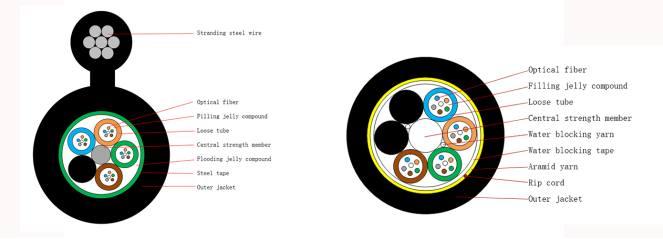
Here's a comparison of the two:
Cable Design
GYTC8S (Figure-8 Aerial Cable): GYTC8S is a figure-8 aerial cable, meaning it has a self-supporting design with a central strength member (usually made of steel) that provides support and allows the cable to be hung between poles.
ADSS (All-Dielectric Self-Supporting): ADSS cables are also self-supporting but have an all-dielectric construction, which means they do not contain any metallic components. ADSS cables use the strength of the aramid or fiberglass yarns in the cable's core for support.
Strength Member
GYTC8S: Typically contains a steel messenger wire for support.
ADSS: Uses aramid or fiberglass yarns for strength, making it non-metallic.
Installation
GYTC8S: Requires a separate support structure, such as messenger wires or strand wires, for installation between poles or towers.
ADSS: Self-supporting and does not require additional support structures. It can be installed directly between poles or towers, which can reduce installation costs.
Span Length
GYTC8S: The span length depends on the strength member and additional support structures used, but it may have shorter spans compared to ADSS due to its reliance on external supports.
ADSS: Can have longer spans between poles or towers, as it is designed to be self-supporting without additional hardware.
Applications
GYTC8S: Commonly used for aerial installations in which support structures are readily available. It's often used for short to moderate distances in distribution networks.
ADSS: Suitable for longer spans and areas where installing support structures is challenging or costly. ADSS cables are commonly used in long-distance, high-voltage power line communications and rural areas.
Signal Attenuation
GYTC8S: The presence of a steel messenger wire can cause some signal attenuation, although it's typically negligible for most applications.
ADSS: Offers low signal attenuation due to its all-dielectric design, making it suitable for long-distance and high-speed data transmission.
Environmental Resistance
GYTC8S: Steel messenger wires may be prone to corrosion over time, especially in harsh environmental conditions.
ADSS: Resistant to corrosion since it lacks metallic components. It's also less susceptible to electrical interference.
Cost
GYTC8S: Generally more cost-effective for shorter spans with readily available support structures.
ADSS: Can be cost-effective for longer spans or areas where installing support structures is expensive.
In summary, the choice between GYTC8S and ADSS depends on the specific requirements of the installation. GYTC8S is suitable for shorter spans with existing support structures, while ADSS is ideal for longer spans, challenging terrains, and areas where a non-metallic, self-supporting cable is preferred. Shenzhen Sopto Technology Co., Ltd is a professional fiber optic cable manufacturer and supplier in China, able to supply fiber optic cables for various purposes. If interested, please contact us for more details. Email:[email protected]
Tags : GYTC8S, ADSS cable, fiber optic cable, Aerial Fiber Optic Cable
— END —




